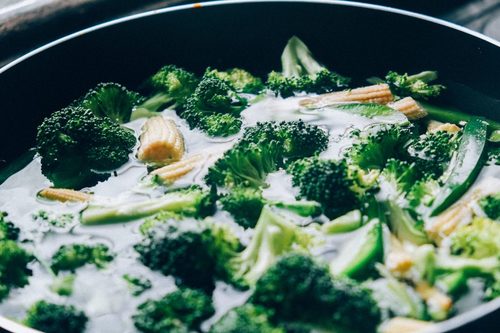From wind to weight loss, raising your roughage can affect your body…
For years we’ve been told that eating more fibre is good for our health. That’s because there’s strong evidence that roughage is associated with a lower risk of heart disease, type 2 diabetes and bowel cancer. But fibre intake is a delicate balance, and drastic changes to your diet can cause unwanted symptoms. Here’s what you need to know.
You might need to ‘go’ more often
Fibre is the structural part of plant foods that our bodies can’t digest or break down, so upping your intake might also up your need for a number two.
“Fibre increases the weight and size of your stool and helps soften it,” says nutritionist Jenny Chu. “This decreases your chances of constipation.”
Insoluble fibre, found in wholegrains, such as brown rice, nuts and seeds, acts like a brush, sweeping through the bowels to keep everything moving.
Soluble fibre, found in oats, bananas and potatoes, absorbs water, helping stools pass more smoothly.
It may make you gassy
Remember the childhood rhyme about beans being good for your heart, but also causing an unwanted side effect? Well, it’s true. “Adding more fibre into your diet may well trigger flatulence,” warns Jenny. But once you’ve got used to digesting more bulky fibre, symptoms should subside. Staying hydrated will help.
You will feel fuller for longer
Raising your fibre intake can reduce appetite, as it slows the movement of food through the gut, says Jenny. “If you don’t feel as hungry, you might not consume as many calories, and this might result in weight loss.”
ALSO SEE: What does intermittent fasting do for your body?
You’ll feel happier
Good gut bacteria is vital for our mental well-being. “Gut microbes ferment and transform fibre sources into short-chain fatty acids, which communicate with cells in the brain that produce serotonin (the happy hormone),” says Jenny.
It could lower the risk of bowel cancer
“When fibre meets the bacteria in the bowel, the bacteria make something called butyrate, which helps the cells stay healthy, so tumours are less likely to develop,” says Fiona Osgun, from Cancer Research UK.2
ALSO SEE: Grow your own first aid kit in your garden with these foods
Want to give it a try?
Fibre is found in all fruit and veg, so adding a few more of these to your regular meals is a good place to start. But go slow. An extra serving a day or making small tweaks – such as swapping white bread for wholemeal, or crisps for nuts – will help minimise any undesirable effects.
ALSO SEE:
Feature Image: Pexels

